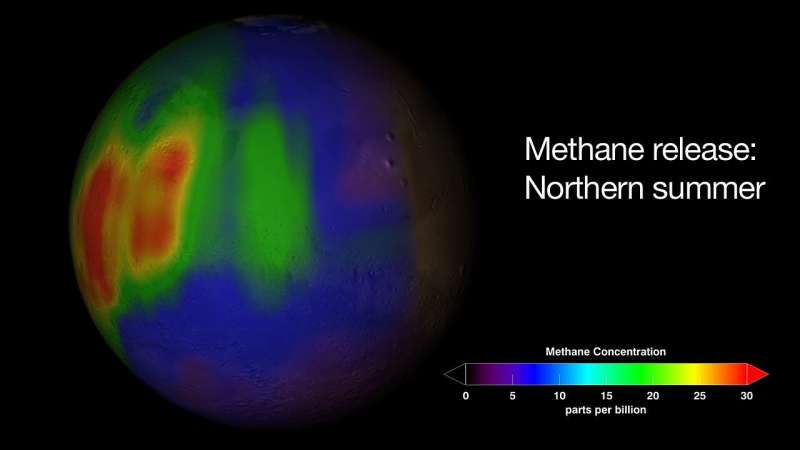
Credit: Pixabay/CC0 public domain
While carbon dioxide, or CO2it is the best-known greenhouse gas, but many others, including methane and nitrous oxide, are also causing global warming and altering the Earth’s climate.
Methane
CO2 it accounts for about two-thirds of warming attributed to greenhouse gases, said Piers Forster, an expert at the University of Leeds and author of reports for the IPCC, the United Nations’ climate science panel.
Methane, or CH4, is the second most important greenhouse gas linked to human activities after CO2.
About 40% of methane comes from natural sources, particularly wetlands, but the majority (about 60%) is linked to human activities such as agriculture (ruminant breeding and rice cultivation), fossil fuels and waste.
Its heating power is more than 80 times greater than that of CO2 over 20 years2but its lifespan is shorter, making it an important lever in attempts to limit global warming in the short term.
Reducing methane emissions “would have a strong cooling effect in the short term, because methane concentrations in the atmosphere would decrease rapidly,” said Mathijs Harmsen, a researcher at the Dutch Agency for Environmental Assessment PBL.
Policies should “focus on capturing low-hanging fruit, so very low-cost measures such as reducing natural gas leaks,” he said.
Despite the global commitment to reduce planet-warming emissions signed by many countries, including the European Union and the United States, the trend is not positive.
“Methane is increasing faster in relative terms than any other greenhouse gas and is now 2.6 times higher than in pre-industrial times,” said an international group of researchers under the auspices of the Global Carbon Project, in a published study in the academic journal. diary Environmental research letters.
Nitrous oxide
Nitrous oxide or nitrous oxide (N2O), is the third most important greenhouse gas and almost 300 times more potent than CO22.
It is emitted mainly from synthetic nitrogen fertilizers and manure used in agriculture.
Other emissions come from human activities (chemical industry, wastewater, fossil fuels) or from natural sources (soil and oceans).
“Global human-induced emissions, which are dominated by the addition of nitrogen to cropland, have increased by 30% over the past four decades,” concluded a major study published in the journal Nature in 2020.
The key to the problem lies in the more efficient use of fertilizers.
“Two-thirds of the climate change mitigation potential of N2O could be achieved by reducing fertilizers on only 20% of the world’s cropland, particularly in humid subtropical agricultural regions,” wrote French researcher Philippe Ciais in 2021.
Fluorinated gases
Fluorinated greenhouse gases (PFC, HFC and SF6) are found in refrigerators and freezers, heat pumps, air conditioners and electrical networks.
Even if in small quantities they stand out for their very high heating capacity.
For example, SF6, present in electrical transformers, has a greenhouse effect 24,000 times greater than CO2 over a period of 100 years.
The Montreal Protocol signed in 1987 and ratified by 195 countries has already significantly reduced the presence of CFCs, another ozone-depleting fluorinated gas, in the atmosphere.
In 2016 the Kigali agreement also provided for the progressive elimination of HFCs.
And last year the EU signed a pact to progressively ban the sale of equipment containing fluorinated gases, particularly HFCs, with the aim of eliminating them completely by 2050.
© 2024AFP
Citation: Other greenhouse gases warming the planet (2024, October 8) retrieved October 8, 2024, from https://phys.org/news/2024-10-greenhouse-gases-planet.html
This document is subject to copyright. Except where appropriate for private study or research purposes, no part may be reproduced without written permission. The content is provided for informational purposes only.
#greenhouse #gases #warm #planet